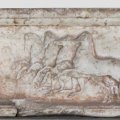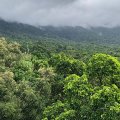The University of Queensland Experimental Mine site at Indooroopilly has joined Brisbane City Council’s Land for Wildlife Program.
The site, which covers approximately 7.5 hectares, is used to train students in mine management and to conduct mine related research.
UQ’s Property and Facilities Section has embarked on a five- year revegetation project for the site, which had been covered with weeds.
Over the past year UQ specialist gardener Philip MacDonald has been gradually removing weeds in small patches and replacing them with local native species.
"The most troublesome weed was Duranta. It had spread right across the site and it was very hard to remove," Mr MacDonald said.
Short-eared Bobuck Possums have been seen on the property, although it is only about 8 kms from the city.
"This is the closest known sighting to the city of this species," Mr MacDonald said.
Foxes also have been seen and Mr MacDonald is investigating how Brisbane City Council can help in their control, as they prey on small native birds, mammals, reptiles and large insects.
Mr MacDonald and co-worker Jacinta Harris have developed an extensive native plant list for the site to help restore the original ecosystems. They are planning to gradually replant the whole site.
Since the program’s inception, over 540 properties have joined the Land for Wildlife Program. Recently, the 10th Anniversary of the Program was held at a Moggill property.
To join the Land for Wildlife Program, landowners must have at least 0.5 hectare of bushland or an area suitable for restoration to native bushland. More information: Contact wcpp@brisbane.qld.gov.au or phone 07 3403 8888.
Media: Jan King 07 3365 1120
.jpg)



